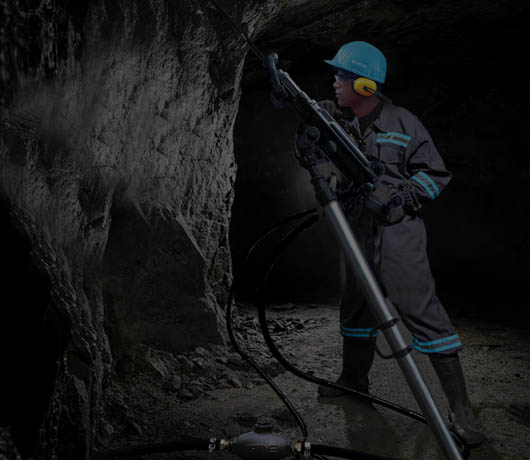Electrical, pneumatic, and hydraulic machines together make the triad supporting modern construction and mining. To begin with, electrical tools demand large amounts of energy to function as well as pose a lot of hazards on site. So let’s compare pneumatics over hydraulics.
Pneumatic vs Hydraulic Tools
Hygiene
Pneumatics easily takes the prize on this front. The primary reason why, is that in the case of accidental damage to a pneumatic rock drill, the only material that is going to leak out is air. Also, the compressed air in these systems is free of particles or oil and lubricants, thanks to the filters fitted in these tools.
On the contrary, in a similar scenario, hydraulic systems may tend to create a mess that is more difficult to clean up in case of damage. The water or oil in these tools may leak out and contaminate the site where they’re being used. Besides, hydraulic tools are more prone to leakage from faulty seals or worn-out valves despite your best efforts.
Efficiency
Hydraulic or pneumatic — which one is more efficient? This has a simple answer. Air is abundant on earth and pneumatic tools utilize it to function whereas hydraulic tools use fluids that are trickier to obtain, utilize well, and dispose of, without any contaminants. The companies that think green will choose to make the most out of the efficient pneumatic tools.
Besides, the air used to work these tools can be easily released into the atmosphere without causing pollution, unlike the water released from hydraulic tools. The transportation of pneumatic tools, especially the ones like CP0032AFR Chicago Pneumatic Sinker Drill equivalent to GME GS0032AFR – Sinker Rock Drill, are much easier to transport than its hydraulic competitors.
Safety
At a site of construction or mining, pneumatics offer more safety than hydraulics. Depending on the fluids used in the hydraulic tool, it may be oil, plasma, or other synthetic fluids, it may cause corrosion of other equipment at the site, unlike pneumatics.
Moreover, the fluids in hydraulic tools, if hot enough, can cause serious burns on the user or damage the other tools in the vicinity. The maximum damage that pneumatics can cause is mild injuries when air escapes through the damaged tools forcibly.
Maintenance
Since the medium used is air, pneumatics are much easier to maintain than hydraulics. All that is required for a safety check is to ensure that there is no air leaking out. Also, the presence of filter units in the tools such as the CP0032A Sinker Drill equivalent to GME GS0032A – Sinker Rock Drill or the Atlas Copco BBD 12T equivalent to GME GBD12T – Sinker Rock Drill , make it easier to clean out particulate matter.
Replacing these filter units is the only maintenance procedure needed here. Hydraulic tools need to be constantly checked for corrosion. The fluid in the tools accelerates the wear of the seals and valves on the tools so they have to be constantly replaced as well.
Time Effectiveness
In simple words, pneumatic tools are faster than hydraulic ones. The compressed air technology that is used in pneumatics enables speedy movements and quicker release of energy. For works that require precision, pneumatics like Atlas Copco RH 658 5L equivalent to GME GS658L – Sinker Rock Drill deliver great results.
Unfortunately, since water has more resistance than air, it results in slower motion. Though these tools can work up to a greater force, they still cannot claim the same rapidity that pneumatic tools work with.
The Final Verdict
Are pneumatic tools like BBD 94 DSI Rock Drill equivalent to GME G94DSI – Rock Drill all that they claim to be? Precisely, yes. The flexibility of pneumatic tools, their versatility in specialized settings, and the practicality of these tools in high-risk settings like mines, make pneumatic tools all the more superior than hydraulic tools.



